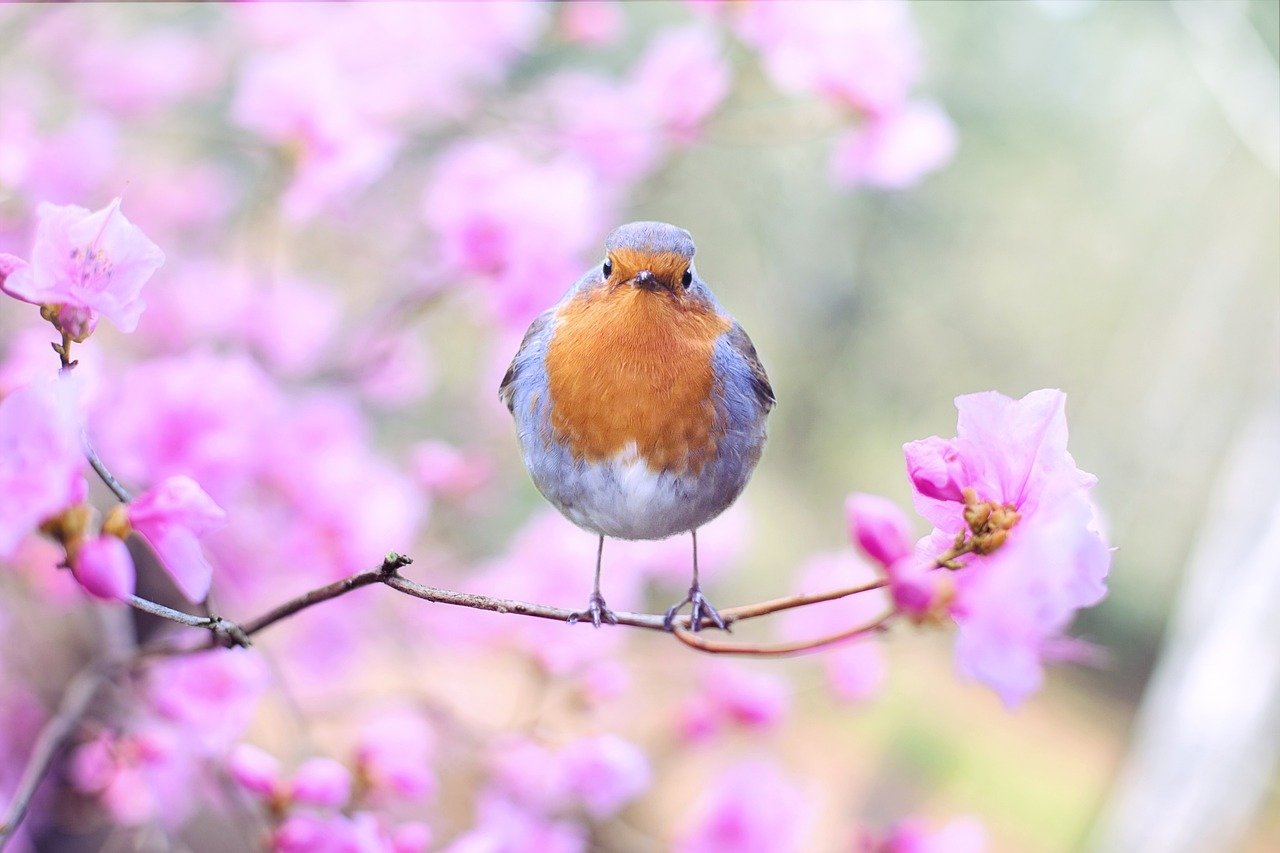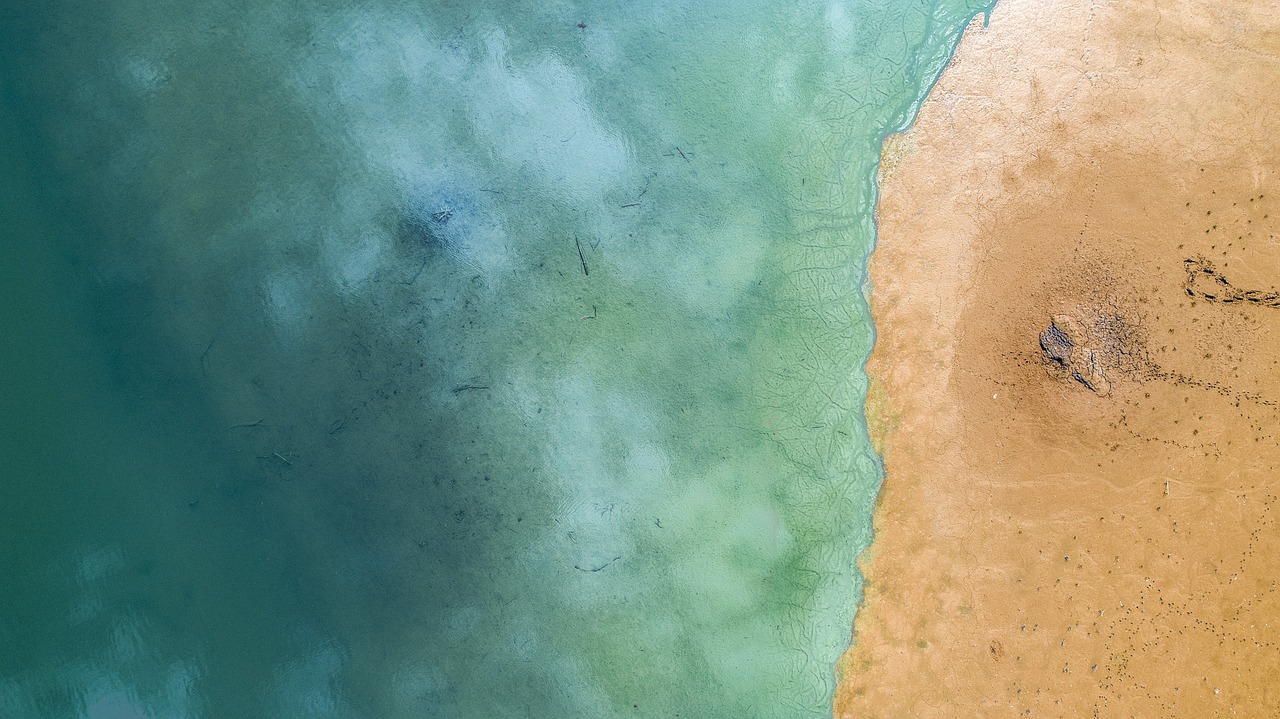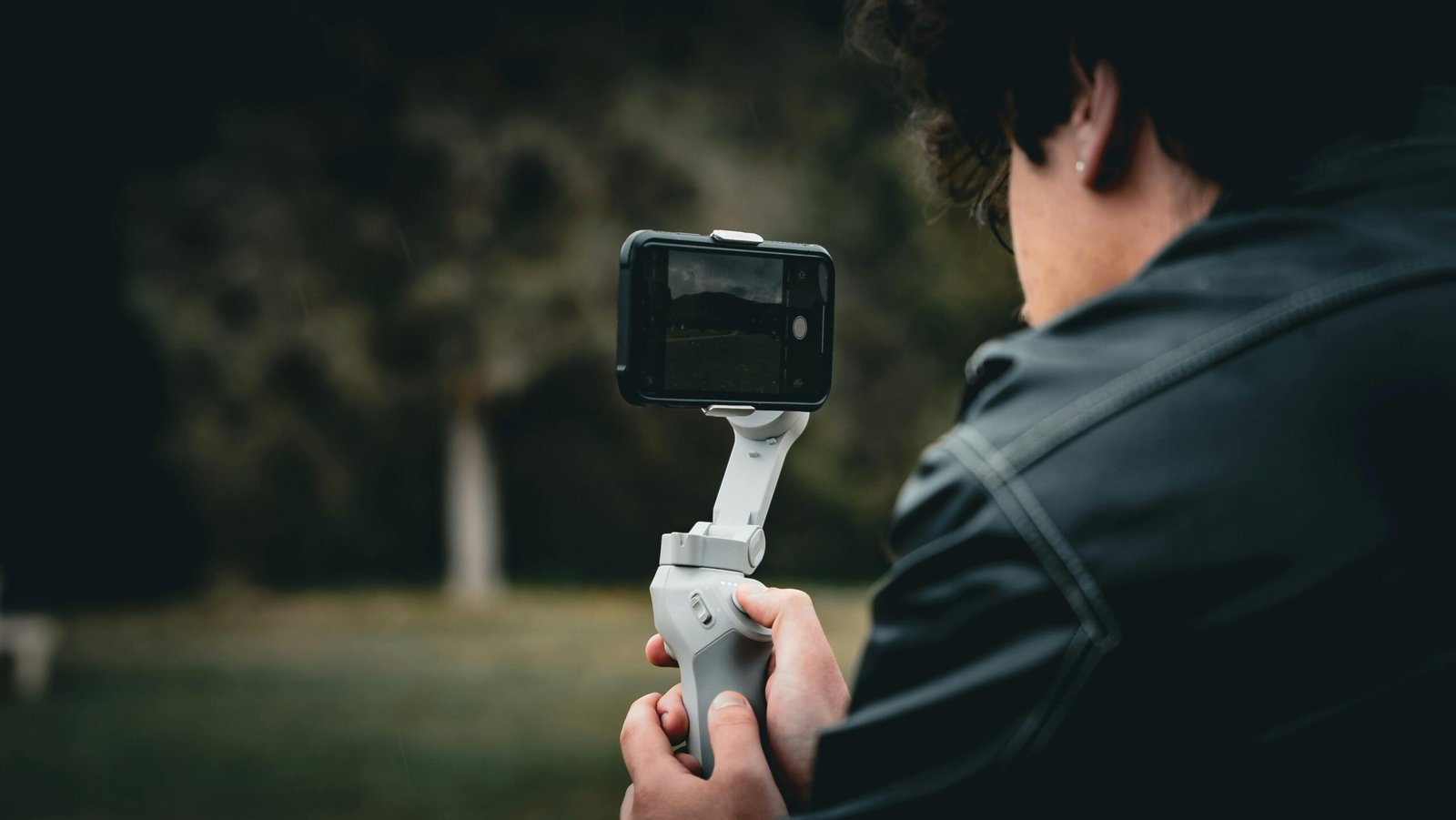Aerial Photography: Capturing the World from Above Aerial photography, also known as airborne imagery, is…
The Art of Photography: A Complete Guide
Introduction
Photography is a medium that has changed the world in countless ways. It allows us to capture and preserve our memories, document the world around us, and share our experiences with others. It’s a medium that has become more accessible than ever before, with smartphones and other digital devices allowing people to take high-quality photos at any time.
Definition of Photography

At its core, photography is the art of capturing light to create an image. The word “photography” comes from the Greek words “phōs” (light) and “graphé” (drawing). In essence, photography is the process of capturing light on a photosensitive surface – whether that be film or a digital sensor – to create an image.
Brief History of Photography

The history of photography dates back almost two centuries. The first permanent photograph was taken by Joseph Nicéphore Niépce in 1826 using a camera obscura and a pewter plate coated with bitumen.
Over time, photographic technology evolved rapidly as inventors like Louis Daguerre and William Henry Fox Talbot developed new techniques for fixing images onto surfaces like paper or metal. In the late 1800s, Kodak introduced its first consumer camera – the Brownie – which made photography accessible to everyday people for the first time.
Since then, photographic technology has continued to evolve at an astonishing rate. Today’s cameras are more powerful than ever before, capable of capturing incredibly detailed images even in low-light conditions.
Importance of Photography in Modern Society

Photography plays an important role in modern society in many different ways. For one thing, it allows us to capture and preserve memories. We can look back on old family photos or travel photos and be transported back to a different time and place.
Photography also serves as a powerful documentary tool, allowing us to record history as it unfolds. In addition, photography has become an important medium for artistic expression. Photographers can use their cameras to capture the beauty of the world around them or to create abstract works that challenge our perceptions.
Photography is an important commercial tool, used in advertising and marketing to sell products and services. Overall, photography is a medium that has had an enormous impact on modern society. It allows us to see the world in new ways, capture memories, and document history. As technology continues to evolve, we can only imagine what exciting new possibilities lie ahead for this incredible art form.
Types of Photography
Photography is an art form that encompasses a wide range of subjects and genres. Here are some of the most common types of photography, each with its unique approach and style.
1. Portrait Photography

A portrait is simply a photograph of a person or group of people, where the focus is on their faces and expressions. Portrait photography has been popular for centuries, but the approach has evolved significantly over time. There are three main types of portrait photography:
a. Studio Portraits
In studio portraits, photographers use controlled lighting and backdrops to create a specific look and feel. These portraits are often used for professional headshots, family photos, or high school senior pictures.
b. Environmental Portraits
In environmental portraits, photographers capture their subjects in their natural habitat or familiar surroundings. For example, a musician could be photographed in his recording studio or a chef.
In environmental portraits, photographers capture their subjects in their natural habitat or familiar surroundings. For example, a musician could be photographed in their recording studio or a chef in a bustling kitchen. This approach aims to convey a sense of the subject’s personality and the environment they inhabit.
c. Candid Portraits
Candid portraits are taken in a spontaneous and unposed manner, capturing genuine expressions and emotions. Photographers often use this approach to capture people in their everyday lives, telling stories through authentic moments.
2. Landscape Photography

Landscape photography focuses on capturing the beauty and grandeur of natural landscapes. It often includes mountains, forests, beaches, and other scenic environments. Landscape photographers strive to capture the essence of a location, emphasizing its unique features, lighting conditions, and weather patterns.
3. Wildlife Photography

Wildlife photography involves capturing animals in their natural habitats. It requires patience, observation, and technical skills to capture compelling images of various creatures. Wildlife photographers often travel to remote locations and use specialized equipment to capture elusive animals in their natural behaviors.
4. Street Photography

Street photography is all about capturing the essence of urban life and everyday moments in public spaces. It often focuses on people, capturing their interactions, emotions, and the unique characteristics of urban environments. Street photographers must have a keen eye for composition, timing, and the ability to blend into their surroundings to capture candid shots.
5. Fashion Photography

Fashion photography revolves around capturing images that showcase clothing, accessories, and beauty in a visually appealing and captivating manner. It plays a crucial role in the fashion industry, where images are used for advertising campaigns, editorials, catalogs, and online platforms.
Fashion photographers work closely with stylists, makeup artists, and models to create images that convey a specific mood, concept, or brand identity. They need a keen eye for fashion trends, composition, and attention to detail to capture the garments and accessories in the most flattering and alluring way.
The location and lighting play vital roles in fashion photography. Fashion shoots can take place in studios, on location, or even in exotic destinations. Photographers must be able to adapt to different environments and use lighting techniques to enhance the textures, colors, and overall aesthetics of the fashion items.
6. Documentary Photography

Documentary photography focuses on capturing real-life events, social issues, and the human condition. It aims to tell stories and raise awareness about important subjects. Documentary photographers often work in photojournalism, covering news events, documenting cultures, or shedding light on societal challenges.
7. Macro Photography

Macro photography involves capturing extreme close-up images of small subjects, such as insects, flowers, or intricate details. It requires specialized lenses and techniques to capture fine details and reveal the hidden beauty of small-scale subjects.
8. Sports Photography

Sports photography is all about capturing the action, energy, and emotions in sports events. Sports photographers need to anticipate moments, use fast shutter speeds, and have excellent knowledge of the sport to capture impactful images that freeze the intensity of the moment.
These are just a few examples of the many types of photography. Each genre requires its own set of skills, equipment, and artistic vision to create compelling and impactful images.
9. Wedding Photography

Wedding photography is a specialized genre that captures the precious moments and emotions of a couple’s big day. It involves documenting the entire wedding event, from the pre-wedding preparations to the ceremony and reception. Wedding photographers aim to create stunning images that preserve the joy, love, and beauty of the occasion.
To excel in wedding photography, a photographer must possess a combination of technical skills, creativity, and the ability to work under pressure. They should be proficient in capturing candid moments, organizing group shots, and using natural and artificial lighting to enhance the ambiance. Building a rapport with the couple and their families is also crucial to ensure a comfortable and enjoyable experience.
During a wedding shoot, photographers face various challenges, such as working in different lighting conditions, managing time constraints, and capturing fleeting moments that cannot be recreated. They must be adaptable, resourceful, and skilled in post-production techniques to deliver a final collection of images that evoke the emotions and memories of the day.
10. Event Photography

Event photography encompasses capturing images at various types of events, such as conferences, concerts, parties, and corporate gatherings. The goal is to document the event’s atmosphere, interactions, and key moments, creating a visual narrative that reflects the occasion.
Event photographers need to be versatile and quick-thinking, as events are often fast-paced and unpredictable. They should have an eye for detail, an understanding of composition, and the ability to work in different lighting conditions. Capturing candid shots, group photos, and significant moments while remaining unobtrusive is essential.
Good communication skills are vital for event photographers to coordinate with event organizers, clients, and attendees. They should be able to capture the essence of the event and deliver images that highlight the emotions, energy, and key elements of the occasion.
11. Portrait Photography

Portrait photography focuses on capturing the essence and personality of individuals or groups. It goes beyond merely taking a person’s picture and aims to reveal their character, emotions, and unique qualities. Portrait photographers work closely with their subjects to create compelling images that tell a story.
A successful portrait photographer understands the importance of building rapport and establishing a connection with the subject. They should create a comfortable and relaxed environment, allowing the subject’s true personality to shine through. Attention to lighting, composition, and posing is crucial to enhance the visual impact of the portrait.
Portrait photography can be done in various settings, such as studios, outdoor locations, or even in the subject’s natural surroundings. Each setting offers different opportunities for creativity and storytelling. From capturing formal headshots to environmental portraits that reflect a person’s lifestyle or profession, portrait photographers have the freedom to explore and experiment with different techniques.
12. Commercial Photography

Commercial photography is focused on creating images that are used for advertising, marketing, and promotional purposes. It can encompass various subjects, such as products, food, architecture, and lifestyle. The primary goal is to showcase the subject in a visually appealing and persuasive way to attract consumers or clients.
Commercial photographers work closely with clients, advertising agencies, and creative directors to understand the vision and objectives of the project. They should be able to translate the client’s brief into compelling visual imagery. Attention to detail, lighting techniques, and post-processing skills are crucial in commercial photography to create images that align with the client’s brand and marketing strategy.
13. Product Photography

Product photography is a specialized field that focuses on showcasing products in the best possible light. It plays a crucial role in e-commerce, catalogs, brochures, and advertising campaigns. Product photographers need to highlight the features, details, and quality of the items, enticing potential buyers.
In product photography, lighting and composition are vital to emphasize the product’s unique selling points and create a desirable visual narrative. Photographers may use various techniques, such as macro photography for small products or lifestyle setups to show the product in use.
Attention to post-processing is also essential in product photography to ensure accurate colors, remove imperfections, and enhance the overall presentation of the product. Clear and well-executed product images can significantly impact sales and attract potential customers.
14. Real Estate Photography

Real estate photography focuses on capturing images that showcase properties for sale or rent. The goal is to present the property in its best light, highlighting its features, layout, and potential. Real estate photographers work closely with real estate agents, property developers, and homeowners to create visually compelling images that attract potential buyers or renters.
In real estate photography, attention to composition, lighting, and post-processing is crucial to capture the essence and atmosphere of the property. Photographers may utilize techniques such as HDR (High Dynamic Range) photography to capture a wide range of tones, ensuring that both the interior and exterior details are well-exposed.
15. Nature Photography

Nature photography celebrates the beauty and wonder of the natural world. It encompasses capturing landscapes, wildlife, plants, and natural phenomena. Nature photographers have a deep appreciation for the environment and strive to create images that evoke emotions, raise awareness, and promote conservation.
Nature photography often requires patience, perseverance, and a keen eye for detail. Photographers must understand the behavior of wildlife, the best times for capturing natural lighting, and the ability to anticipate and seize fleeting moments in nature.
16. Aerial Photography

Aerial photography involves capturing images from an elevated perspective using aircraft, drones, or other aerial platforms. It offers a unique viewpoint and allows photographers to showcase landscapes, cityscapes, and events from an extraordinary angle.
17. Drone Photography

Drone photography is a subset of aerial photography that specifically uses unmanned aerial vehicles (drones) to capture images. Drones equipped with high-resolution cameras offer photographers the ability to access difficult-to-reach locations and capture stunning aerial views.
Photo Editing Services
Photo editing services encompass the post-processing of images to enhance their quality, correct imperfections, and achieve a desired aesthetic. Professional photo editors use software tools to adjust colors, exposure, sharpness, and retouch images as per the client’s requirements.
Photo Retouching
Photo retouching involves more detailed and specific editing techniques to modify or enhance specific elements of an image. It can include removing blemishes, smoothing skin, adjusting proportions, or even digitally manipulating elements to achieve a desired effect.
Photography Tips

Photography tips provide guidance, techniques, and advice to aspiring photographers. They cover various topics such as composition, lighting, equipment, post-processing, and storytelling. Photography tips can help beginners improve their skills, expand their knowledge, and refine their craft.
Remember, each of these photography genres requires continuous learning, practice, and adaptation. Developing a personal style, honing technical skills, and understanding the specific demands of each genre will contribute to becoming a successful photographer in the respective field.
Essential Photography Techniques

To master the art of photography, it’s essential to understand and practice various techniques. Here are some fundamental techniques that can help improve your photography skills:
1. Composition
Composition refers to the arrangement of elements within a photograph. It involves considering factors such as framing, balance, leading lines, and the rule of thirds. By understanding composition principles, photographers can create visually appealing and engaging images.
2. Lighting

Lighting is a crucial aspect of photography. Understanding how light interacts with your subject can dramatically impact the mood, texture, and overall quality of your photos. Experimenting with natural light, artificial lighting, and learning to manipulate light can help you capture stunning images.
Exposure refers to the amount of light that reaches the camera’s sensor or film. It determines the brightness or darkness of an image. Balancing the exposure triangle – consisting of aperture, shutter speed, and ISO.
3. Exposure
Exposure refers to the amount of light that reaches the camera’s sensor or film. It determines the brightness or darkness of an image. Balancing the exposure triangle – consisting of aperture, shutter speed, and ISO – is crucial to achieve the desired exposure. Understanding how these three elements work together allows photographers to control the brightness, depth of field, and motion blur in their images.
4. Focus and Depth of Field

Focus is the sharpness or clarity of a subject in an image. It can be controlled by adjusting the camera’s focus point and using techniques such as autofocus or manual focus. Depth of field, on the other hand, refers to the range of distance in a scene that appears sharp in the image. It can be shallow, with only a small portion in focus, or deep, with a larger area in focus. Understanding focus and depth of field allows photographers to create selective focus and emphasize specific subjects within an image.
5. White Balance
White balance refers to the color temperature of light in a photograph. Different light sources emit light with varying color temperatures, ranging from warm (yellow/red) to cool (blue). Setting the correct white balance ensures that the colors in your image appear accurate and natural. White balance can be adjusted manually or using presets on your camera or in post-processing.
6. Composition

Composition refers to the arrangement of elements within a photograph. It involves considering factors such as framing, balance, leading lines, and the rule of thirds. By understanding composition principles, photographers can create visually appealing and engaging images. Composition techniques help guide the viewer’s eye and create a sense of harmony and balance in the photograph.
7. Perspective and Point of View

Perspective and point of view play a crucial role in photography. By changing your angle or position relative to the subject, you can create unique and interesting compositions. Experimenting with different perspectives, such as shooting from a low or high angle, can add depth and visual interest to your images.
8. Post-processing and Editing

Post-processing and editing involve enhancing and fine-tuning your photographs using software such as Adobe Photoshop or Lightroom. This step allows you to adjust exposure, contrast, colors, and apply creative effects to achieve the desired look and feel in your images. However, it’s important to maintain a balance and avoid excessive editing that alters the integrity of the original photograph.
Mastering these essential techniques and continuously practicing them will help you develop your photography skills and create captivating and meaningful images. Remember, photography is not just about technical proficiency but also about expressing your unique perspective and creativity through visual storytelling.
9. Lighting

Lighting is a fundamental aspect of photography. Understanding how different lighting conditions affect your subject and knowing how to manipulate light can significantly impact the mood and quality of your photographs. Natural light, such as golden hour or diffused light on an overcast day, can create stunning results. Alternatively, artificial lighting, such as using flash or studio lights, provides control and allows you to shape the lighting to suit your creative vision.
10. Capturing Emotion and Storytelling
Photography is a powerful medium for capturing emotions and telling stories. Beyond technical aspects, it’s essential to connect with your subjects and convey their stories through your images. Whether it’s a candid moment, a street scene, or a portrait, strive to capture the essence of the moment and evoke emotions in your viewers. Pay attention to the composition, timing, and context to tell a compelling visual narrative.
11. Mastering Your Gear

Becoming familiar with your camera and other photography equipment is crucial. Take the time to understand the various settings, functions, and capabilities of your gear. Experiment with different lenses, filters, and accessories to expand your creative possibilities. Knowing your equipment well allows you to make informed decisions on the field and react quickly to capture those decisive moments.
12. Developing a Personal Style
While learning the technical aspects of photography is essential, developing a personal style is what sets you apart as a photographer. It’s a combination of your unique vision, artistic preferences, and the way you approach subjects and compositions. Experiment with different genres and techniques, explore various subjects, and analyze your own work to identify recurring elements that define your style. Embrace your individuality and allow it to shine through your photographs.
13. Continuous Learning and Practice

Photography is an ever-evolving art form, and there’s always something new to learn and explore. Stay curious and open to new techniques, trends, and perspectives. Study the work of other photographers, attend workshops, participate in photography communities, and seek feedback to grow and refine your skills. Dedicate time to regular practice and keep challenging yourself creatively.
Remember, photography is a journey of self-expression and discovery. Enjoy the process, embrace the learning curve, and let your passion guide you. With time, dedication, and a commitment to honing your craft, you can develop your unique photographic voice and create images that resonate with others.
14. Post-Processing and Editing
Once you’ve captured your photographs, post-processing and editing can elevate them to the next level. Use software like Adobe Lightroom or Photoshop to fine-tune your images, adjusting elements such as exposure, contrast, color balance, and sharpness. Experiment with different editing techniques to enhance the mood or add a creative touch. However, remember to maintain the integrity of the original image and avoid excessive manipulation that may compromise the authenticity of the photograph.
15. Building a Portfolio

Creating a portfolio is crucial for showcasing your best work and presenting yourself as a photographer. Select a diverse range of your strongest images that highlight your skills, style, and versatility. Consider the sequencing and flow of the images to create a cohesive and engaging portfolio. Regularly update and refine your portfolio as you progress and produce new compelling work.
16. Seeking Feedback and Critique
Feedback from others is invaluable for growth as a photographer. Share your work with fellow photographers, mentors, or photography communities to receive constructive criticism and fresh perspectives. Be open to feedback, both positive and constructive, as it can help you identify areas for improvement and refine your artistic vision.
17. Exploring Different Genres

Photography offers a wide range of genres to explore, from landscapes and portraits to street photography, wildlife, fashion, and more. Don’t limit yourself to a single genre; instead, experiment with different styles to expand your skills and broaden your creative horizons. Exploring diverse genres allows you to discover new techniques, perspectives, and subject matter that can inspire and enhance your photography.
18. Networking and Collaboration
Building connections within the photography community can provide valuable opportunities for growth and exposure. Attend photography events, workshops, and exhibitions to meet fellow photographers, industry professionals, and potential clients. Collaborate with other artists on projects to gain new insights, share knowledge, and create unique bodies of work. Networking and collaboration can open doors to new experiences and expand your reach as a photographer.
19. Finding Inspiration
Inspiration can come from various sources, such as art, literature, nature, or everyday life. Surround yourself with creativity and seek inspiration beyond photography. Visit galleries and museums, read books, watch movies, explore different cultures, and engage with other art forms. Drawing inspiration from diverse sources allows you to infuse your photography with fresh ideas and perspectives.
20. Enjoying the Journey

Finally, remember to enjoy the journey of being a photographer. Photography is a form of self-expression and a way to connect with the world around you. Embrace the joy of exploring new places, meeting interesting people, and capturing moments that matter to you. Embrace the challenges and failures as learning opportunities, and savor the successes along the way. Photography is a lifelong pursuit, so cherish every step of the way.
21. Embracing Continuous Learning
Photography is an ever-evolving field, with new techniques, technologies, and trends emerging regularly. Stay updated with the latest developments by engaging in continuous learning. Attend workshops, seminars, and online courses to expand your knowledge and refine your skills. Explore photography-related websites, blogs, and forums to stay connected with the photography community and learn from experienced professionals.
22. Experimenting with Different Equipment

While having a quality camera and lens is important, don’t be afraid to experiment with different equipment. Borrow or rent cameras, lenses, or accessories that you’ve been curious about but haven’t had the chance to try. This experimentation can lead to unique and unexpected results and help you discover new tools that align with your vision and style.
23. Developing Your Unique Style
Developing a unique style is an essential aspect of becoming a recognized photographer. Experiment with different techniques, compositions, and editing styles to find what resonates with you. Over time, you’ll develop a signature style that sets you apart from others. Embrace your individuality and allow it to shine through your photographs.
24. Building an Online Presence

In today’s digital age, having an online presence is crucial for reaching a wider audience and showcasing your work. Create a photography website or blog to display your portfolio, share your journey, and connect with potential clients or collaborators. Utilize social media platforms like Instagram, Facebook, or Flickr to share your work regularly and engage with a broader photography community.
25. Seeking Opportunities for Exhibition
Exhibiting your work in galleries, art shows, or photography competitions can provide valuable exposure and recognition. Research local galleries or art events that accept photography submissions and submit your work for consideration. Participating in exhibitions not only allows you to showcase your talent but also helps you connect with other artists and potential clients.
26. Nurturing Relationships with Clients
If you choose to pursue photography professionally, nurturing relationships with clients is crucial for success. Provide exceptional customer service, deliver high-quality work, and maintain clear communication throughout the process. Building trust and establishing positive connections with clients can lead to repeat business, referrals, and a solid reputation in the industry.
27. Balancing Creativity and Commercial Viability
While pursuing your artistic vision is important, it’s also essential to strike a balance between creativity and commercial viability. Understand the market demand, trends, and preferences while staying true to your unique style. Finding the equilibrium between artistic expression and meeting clients’ expectations can help you thrive as a professional photographer.
28. Taking Care of Your Gear
Properly caring for your photography equipment ensures its longevity and optimal performance. Clean your camera, lenses, and accessories regularly and store them in a safe and protective manner. Invest in camera bags, lens filters, and other accessories that provide adequate protection against dust, moisture, and physical damage. Regular maintenance and care will help you avoid unnecessary expenses and ensure that your gear is always ready for the next shoot.
29. Giving Back to the Community
As you grow as a photographer, consider giving back to the community that supports and inspires you. Volunteer your time and skills to charitable organizations or community projects that can benefit from photography. Offer to teach photography workshops or mentor aspiring photographers. Sharing your knowledge and passion with others not only enriches their lives but also deepens your own understanding and appreciation of the craft.
30. Evolving and Adapting

Photography is a dynamic field, and it’s essential to embrace change, evolve, and adapt. Keep pushing your boundaries, experimenting with new techniques, and exploring different subject matters. Embrace challenges as opportunities for growth and stay open to learning from others. By continuously evolving and adapting, you’ll stay relevant and inspired throughout your photographic journey.
Remember, photography is a personal and creative pursuit, so trust your instincts, follow your passion, and enjoy the process of capturing moments and telling stories through your lens. Best of luck on your photographic endeavors!
31. Collaborating with Other Artists
Collaboration with other artists can be a valuable experience that brings fresh perspectives and creative ideas to your work. Reach out to fellow photographers, models, stylists, or designers and explore opportunities for joint projects. Collaborative efforts can lead to inspiring collaborations, expand your network, and result in unique artistic endeavors.
32. Seeking Feedback and Critique
Feedback and constructive critique are essential for growth as a photographer. Join photography communities or groups where you can share your work and receive feedback from peers and experienced photographers. Be open to constructive criticism and use it as a tool to improve your skills and refine your artistic vision. Embrace feedback as a means of honing your craft.
33. Documenting Personal Projects
In addition to client work, invest time in personal projects that allow you to explore your creative vision without constraints. These projects can be based on personal interests, social issues, or purely experimental ideas. Documenting personal projects not only helps you express yourself but also showcases your versatility and commitment to your craft.
34. Exploring Different Genres and Styles

Don’t limit yourself to a single genre or style of photography. Explore different genres, such as landscape, portrait, street, wildlife, or documentary photography. Experiment with various styles, from minimalistic to vibrant and from traditional to conceptual. Exploring different genres and styles will expand your skills, broaden your perspective, and spark new creative ideas.
35. Building a Supportive Network
Surround yourself with a supportive network of fellow photographers, mentors, or friends who understand and appreciate your passion for photography. Attend photography meetups, join online communities, or participate in photography clubs to connect with like-minded individuals. Having a supportive network not only provides encouragement but also offers opportunities for collaboration, inspiration, and knowledge sharing.
36. Practicing Patience and Perseverance
Photography, like any artistic pursuit, requires patience and perseverance. Not every shot will be perfect, and not every endeavor will yield immediate success. Embrace the learning process, be patient with yourself, and persevere through challenges and setbacks. The more you practice and persist, the more your skills will grow, and the closer you’ll come to achieving your creative vision.
37. Taking Breaks and Finding Balance
Photography can be all-consuming, so it’s important to find a balance and take breaks when needed. Allow yourself time to recharge, reflect, and explore other interests. Taking breaks from photography can actually enhance your creativity by providing fresh perspectives and renewed inspiration when you return to the craft.
38. Embracing the Imperfections

Perfection is subjective, and often, the imperfections in your photographs can add character and emotion. Embrace the imperfections as part of the artistic process. Don’t be afraid to experiment, take risks, and capture moments that may not fit conventional norms. Embracing imperfections can lead to unique and memorable images that truly reflect your artistic vision.
39. Continuing to Learn from Masters
Study the works of renowned photographers who have made significant contributions to the field. Learn from their techniques, compositions, and use of light. Analyze their photographs and try to understand their creative choices. Continuously studying and learning from masters can provide valuable insights and inspire you to push the boundaries of your own work.
40. Enjoying the Journey
Lastly, remember to enjoy the journey of photography. It’s a creative endeavor that allows you to express yourself, observe the world through a unique lens, and connect with others. Embrace the joy of capturing moments, telling stories, and exploring your creative vision. Celebrate your achievements, learn from the challenges, and savor every step of your photographic journey.
Keep your passion alive, stay curious, and continue to evolve as a photographer. The possibilities are endless, and with dedication and perseverance, you can create images that leave a lasting impact.
Difference Between Videographer and Photographer

In the realm of visual arts, there are two primary disciplines that involve capturing moments and telling stories through imagery: photography and videography. While both mediums share similarities, there are distinct differences between them. This segment will explore the disparities between a videographer and a photographer.
Medium of Expression
The fundamental distinction between a videographer and a photographer lies in the medium they use to convey their message. Photographers capture still images, freezing a single moment in time. They focus on composition, lighting, and the precise moment when the shutter is pressed to create a visually compelling image.
On the other hand, videographers work with moving images and audio. They capture a sequence of frames that, when combined, form a cohesive narrative. Videography involves storytelling through motion, incorporating elements such as camera movement, sound, and editing techniques.
Storytelling Approach

Photographers often emphasize capturing a single, impactful moment that tells a story in a still frame. They rely on composition, lighting, and the subjects’ expressions to evoke emotions and convey messages. Photography is a medium that allows viewers to interpret and engage with the image, leaving room for personal interpretation.
In contrast, videographers have the advantage of utilizing movement, sound, and the passage of time to tell a more dynamic and immersive story. They can capture a series of moments, actions, and emotions, allowing viewers to experience a narrative as it unfolds. Videography adds an extra dimension by providing audiovisual cues that enhance the storytelling process.
Technical Considerations

Photographers and videographers often employ different equipment and techniques due to the specific demands of their respective crafts. Photographers typically use cameras with high-resolution sensors, various lenses, and lighting equipment to capture still images. They focus on aspects such as exposure, aperture, and depth of field to create visually stunning photographs.
Videographers, in addition to cameras, require tools such as stabilizers, external microphones, and video editing software to create smooth and professional-looking videos. They need to consider factors like frame rates, audio quality, and the overall flow of the footage during shooting and editing processes.
Post-Processing and Editing
Post-processing plays a crucial role in both photography and videography, but the approaches differ. Photographers often spend considerable time refining individual images through techniques such as color grading, retouching, and enhancing details. The aim is to enhance the visual impact and aesthetics of the still image while maintaining its authenticity.
Videographers, on the other hand, deal with the editing and post-production of a sequence of frames. They focus on the flow of the footage, adjusting color grading and adding transitions to create a cohesive story. Additionally, they incorporate audio editing, synchronization, and sometimes special effects to enhance the overall viewing experience.
Conclusion
Photography is a captivating art form that allows us to capture and preserve moments, express our creativity, and communicate our perspectives with the world. Whether you’re a beginner exploring photography as a hobby or a professional seeking to make a career out of it, the possibilities are endless.
In this comprehensive guide, we have covered various types of photography, including wedding photography, event photography, portrait photography, fashion photography, commercial photography, product photography, real estate photography, nature photography, aerial photography, drone photography, photo editing services, photo retouching, and photography tips. Each genre offers unique challenges and opportunities for creative expression.
By understanding the fundamentals, investing in the right equipment, honing your technical skills, and developing your artistic eye, you can embark on a rewarding photographic journey. Remember, photography is not only about capturing images but also about telling stories, evoking emotions, and leaving a lasting impact on your viewers.
Additionally, we explored some frequently asked questions to provide guidance on starting out, improving your skills, finding clients, choosing the right software, pricing your services, protecting your work, and accessing educational resources. These insights will help you navigate the practical aspects of the photography industry and enhance your professional growth.
Photography is a continuous learning process, and as technology advances and trends evolve, there will always be new techniques to master and creative possibilities to explore. So, embrace the journey, keep experimenting, and let your passion for photography shine through your work.
Now, armed with knowledge, inspiration, and practical tips, it’s time to grab your camera, venture into the world, and capture the beauty that surrounds us. Happy shooting!
Frequently Asked Questions (FAQ)
1. What equipment do I need to start in photography?
The equipment you need depends on the type of photography you want to pursue. However, some essential items include a camera (DSLR or mirrorless), lenses suited for your chosen genre, a tripod, memory cards, and extra batteries. Additional accessories like flashes, filters, and a computer for post-processing can be beneficial as well.
2. How can I improve my photography skills?
Improving your photography skills requires practice, experimentation, and continuous learning. Here are a few tips to help you enhance your skills:
- Study composition techniques and experiment with different angles.
- Learn about lighting and how it affects your subjects.
- Practice regularly and challenge yourself to try new subjects or techniques.
- Critically analyze your work and seek constructive feedback from others.
- Study the works of renowned photographers and gain inspiration from their styles.
3. How do I find clients for my photography business?
Finding clients for your photography business involves a combination of marketing, networking, and delivering high-quality work. Some strategies to consider include:
- Create an online portfolio showcasing your best work.
- Utilize social media platforms to promote your services and engage with potential clients.
- Attend industry events, trade shows, and workshops to network with professionals and potential clients.
- Collaborate with local businesses, such as wedding planners or small brands, to gain exposure.
- Offer special promotions or referral incentives to encourage word-of-mouth marketing.
4. What software is best for photo editing?
There are several popular software options for photo editing, including Adobe Photoshop, Adobe Lightroom, Capture One, and DxO PhotoLab. Each software has its own unique features and benefits. It’s recommended to try different options and find the one that suits your editing style and workflow.
5. How do I price my photography services?
Pricing your photography services can be challenging, as it depends on various factors such as your experience, expertise, location, and the type of project. Research the market rates in your area, consider your expenses and time investment, and factor in the value you provide to clients. It’s important to strike a balance between being competitive and ensuring your services are adequately compensated.
6. How can I protect my photographs from theft or unauthorized use?
To protect your photographs from theft or unauthorized use, consider the following measures:
- Watermark your images with your name or logo to make it more difficult for others to claim ownership.
- Use digital rights management (DRM) tools or copyright metadata to embed copyright information into your image files.
- Register your work with the appropriate copyright office to establish legal proof of ownership.
- Regularly monitor the internet for unauthorized use of your images and take appropriate action, such as issuing takedown notices or pursuing legal remedies if necessary.
Remember to consult with legal professionals to fully understand copyright laws and protections in your jurisdiction.
7. How can I find photography workshops or educational resources?
There are various ways to find photography workshops or educational resources:
- Search online for photography workshops, seminars, or courses in your area.
- Explore educational platforms and websites that offer online photography courses and tutorials.
- Join photography communities or forums where photographers share information about upcoming workshops or educational resources.
- Attend photography conferences or expos where you can learn from industry experts and interact with fellow photographers.
Remember to research the credibility and reviews of any workshops or educational resources you’re considering to ensure their quality and relevance to your photography goals.
With these FAQs and their respective answers, you’ll have a better understanding of photography and how to navigate the field effectively.




